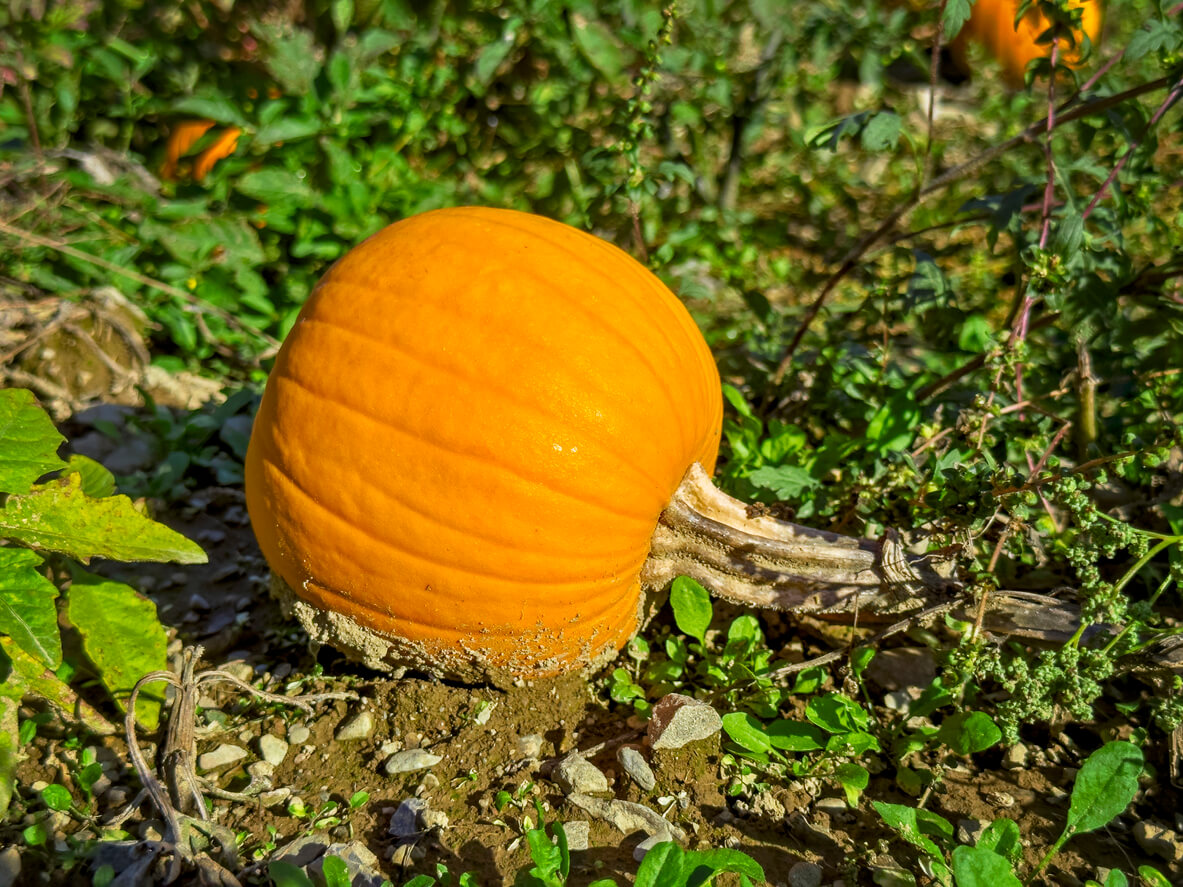
Pumpkin growing in the sun
Pumpkins like to feel the sun. All day. As you set up a spot for your pumpkin vines, look for space that gets full sun. If your garden climate is particularly hot, seek out a spot that provides some afternoon shade, or plan to set up a shade cloth when things turn hot.
Your soil should have a pH level between 6.0 and 7.0. Not sure what your soil pH is? Don’t guess: get it tested. This should really be the first thing you do before you ever put seed to soil. Incompatible soil pH levels can spell disaster for your crops.
You’ll save yourself a lot of time and aggravation if you get your soil tested, and your plants will thank you by growing instead of languishing. Your local extension center will have information on how to get your soil tested. For a little bit of preparation work, you can get a lot of information about the composition of your soil. Can you use one of those soil-testing probes? Yes. Are they a good substitute for sending a soil sample to be tested? Well, not really. Soil testing is easy and inexpensive, and it gives you great information on the composition and health of your soil.
For a healthy pumpkin harvest, you can amend your soil with well-rotted manure or compost in the spring, before you plant, or any time to prepare your soil for your eventual pumpkins. Do not use fresh manure; it may have harmful bacteria and it could contain weed seeds. You don’t really need to make more work for yourself. And don’t use a “weed and feed” type of fertilizer on any of your vegetables. Those types of fertilizer contain weed killers that will also kill your vegetable plants.
Make sure that the soil you have planned for your pumpkins is well draining. Pumpkins are thirsty plants, but they don’t like sitting in soggy soil.
How do you grow your pumpkins? Have you had your soil tested or do you do it yourself? Please tell us your tips and tricks for growing great pumpkins!


 Previous
Previous

